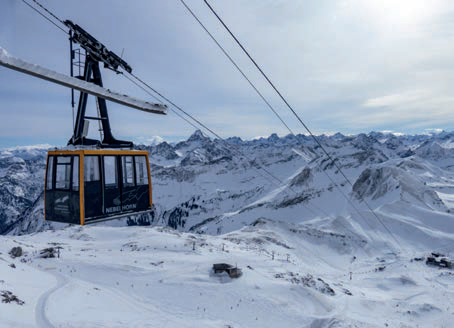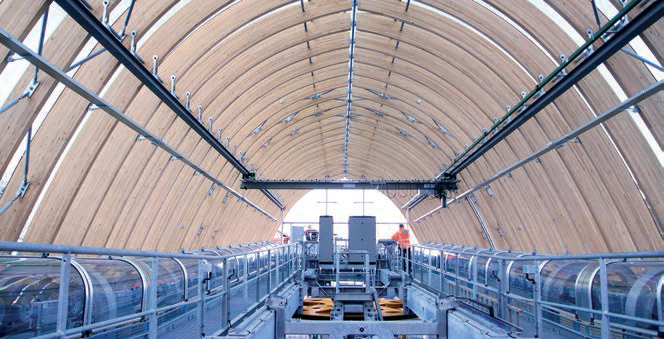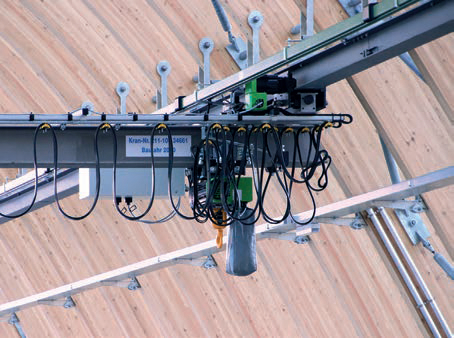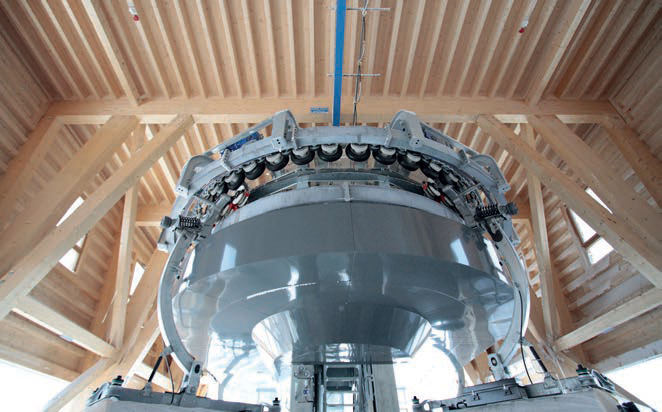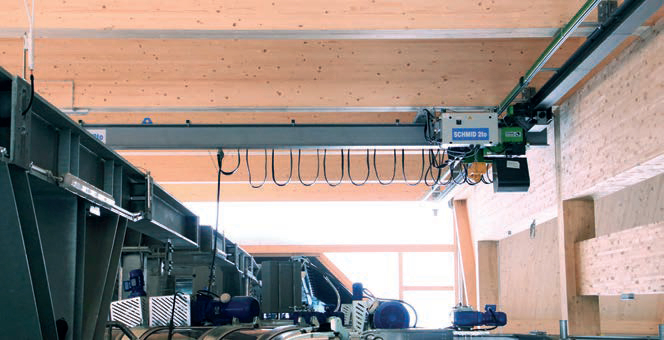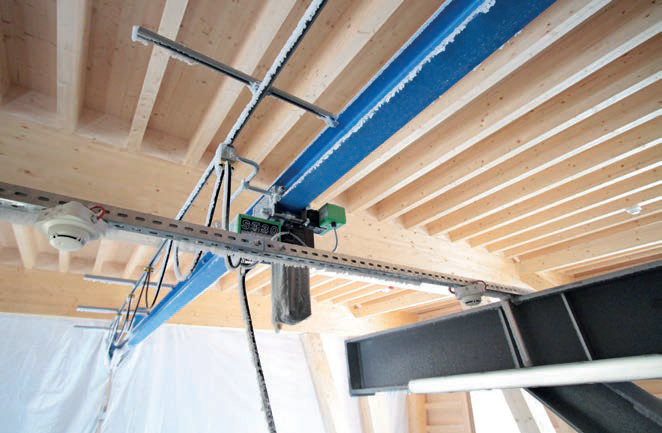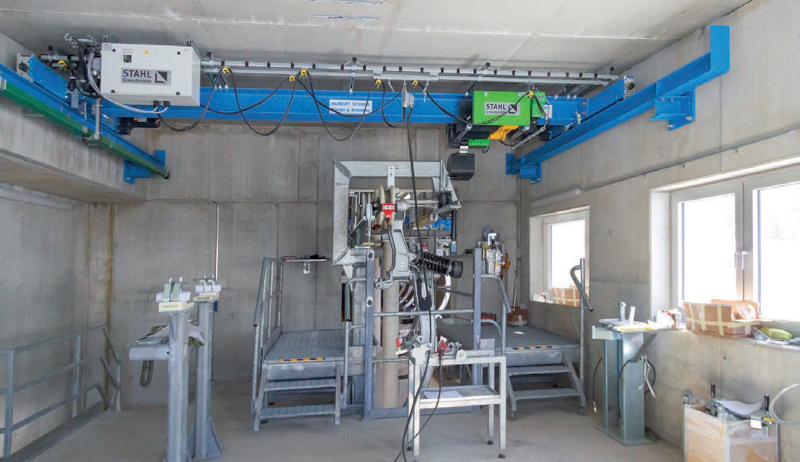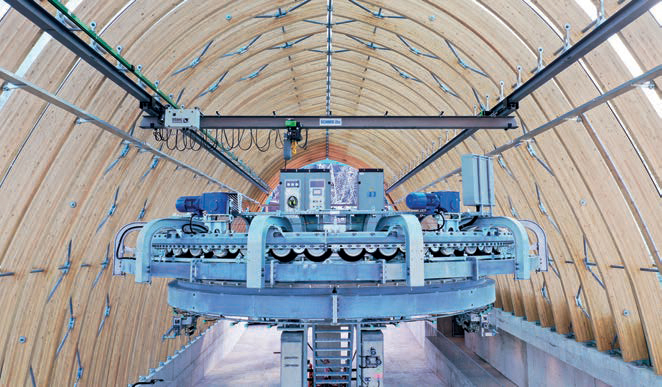Ain’t no mountain high enough
10 February 2022Hubert Schmid, part of Stahl CraneSystems, partners with Nebelhornbahn on its €55m renovation in the Alps.
Hubert Schmid Bauunternehmen, crane construction partners of Stahl CraneSystems, has completed a project with Nebelhornbahn on the design and assembly of four crane systems, for maintenance work on the Nebelhorn cable car in the Alps.
The Nebelhorn is a 2,224-metre-high (7,297 ft) mountain in the Allgäu Alps in Germany, near the village of Oberstdorf, which is part of the Daumen Group mountain range. Its summit has a renowned viewpoint over the Alpine massif.
Nebelhornbahn operates a series of enclosed cable car and tram line systems, ski lifts, a hotel, the Marktrestaurant on the summit and a cafe.
Established in 1930 and still one of the longest passenger overhead railways in the world, the company decided it was time to modernise the facility, with an approximately €55m makeover including a new 10-seater gondola lift, replacing the old large-scale aerial tramway, that takes visitors up to the top.
Oberstdorf-Kleinwalsertal mountain railways made extensive use of environmentally friendly and ecological construction methods in the project, including a new valley and middle station and the expansion of the Höfatsblick mountain station.
The entire cable car technology, including all its controls and cabins, was delivered by Leitner based in Sterzing, South Tyrol. “We basically deal with all aspects of cable car technology systems worldwide. As the overall project planner for the Nebelhornbahn, we also took on responsibility for the mechanical assembly and electrical installations,” said Gerald Senn, construction site manager, cable car technology, Leitner.
“With regard to the crane technology for the individual stations, the systems had to be partly built into areas with very limited space and adapted to pre-existing building conditions and peculiarities. We appointed Huber Schmid as a partner for the project, because the company not only had the knowledge to implement the crane technology we wanted, but also offered solutions for the occasionally special interfaces that had to be considered. As a regional company, Hubert Schmid, in Markteberdorf, Germany, also ensured a reliable local service for crane systems,” said Jan Sorg, project engineer. Leitner.
For Hubert Schmid, the project started in mid-2020, whereby the assembly times of the cranes were based on the construction progress of the individual railway stations. “On average, we only had a few days for assembly and installation. Therefore, among other things, we pre-assembled the cranes in the factory,” said Rainer Haase, project manager, Hubert Schmid Bauunternehmen.
The mountain station of the Nebelhornbahn, which is 1932m above sea level, proved to be a logistical challenge, because the cranes and components had to be transported to the operation site over narrow, steep mountain roads using the great skill and experience of the lorry drivers. “And we also reloaded our assembly materials and tools into all-wheel drive vehicles to reach the mountain station,” added Haase.
Senn said there were also challenges when installing the cranes themselves. The roof construction of the mountain station consists of laminated wooden beams. The monorail suspension crane with a load capacity of 1.6 tons had to be installed horizontally suspended when the roof was sloping. “The running track of the crane was therefore mounted on the stepped-like arrangement of laminated beams. Each individual suspension of the monorail is a special construction,” he said.
The length of the crane’s monorail (maximum travel speed 40 m/min) is 13.42 m. A hoist with an ST 30 chain hoist, a lifting height of 8.5 m, a lifting speed of max. 8 m/min and a maximum cross travel speed of 20 m/min was also installed. The chain hoist featured a special chain box at the customer’s request. “In spaces with high interfering edges, the chain box sometimes hangs lower than the crane hook. Since cable car technology has many moving parts, a safety distance of at least 500mm must be maintained at all times. Therefore, a shortened chain box made of sheet steel was chosen for the chain hoist,” said Haase.
Two cranes were installed at the middle station, one of which was a single-girder suspension crane with a load capacity of 2 tons and a maximum speed of 20 m/ min. This crane, with a crane track length of 28.92 m, was also attached to the laminated beams. In connection with this, it was necessary to take the longitudinal expansion of the laminated beams into account due to temperature fluctuations when connecting the beams for a smooth running of the rollers.
Since all maintenance areas had to be easily accessible with the hoist (max. lifting height 19 m) within the restricted height of the middle station, the available space in height was significant here. For this reason, an STK 50 chain hoist with extra-short headroom trolley and integrated special chain box was used.
With a height reduced by 60%, the extra-short headroom trolley achieves a maximum hook path, which is beneficial in confined spaces such as the middle station. The distance from the lower edge of the carrier to the base of the hook is 210mm or 185mm depending on the load capacity of a crane. The vertically mounted chain hoists used here are based on the standard components of the ST chain hoist program of Stahl CraneSystems.
The patented chain guide has two separate, synchronously running chains acting on a hook block. The middle station also has a maintenance section for the cable car gondolas, which has been equipped with a single-girder overhead travelling crane (load capacity 1.6t, lifting height 8.5m). Within the restricted height of the maintenance section, the crane must also be mounted as low as possible under the ceiling for maximum low startup dimensions. “Since every millimetre counts here, we have once again chosen an STK 50 chain hoist with an extra-short headroom trolley,” said Haase.
The valley station of the Nebelhornbahn welcomes visitors with its impressive architecture of wood and glass, featuring a total of 39 laminated wooden beams that span an entirely glazed hall 10 metres in height. The single-girder suspension crane with a lifting capacity of 2 tons, as well as a lifting height of 8.5m, and above all the crane track that runs the entire length of the hall of more than 36m, had to be integrated into the building as harmoniously as possible.
Instead of flat-rolled steels, a filigree was developed for the suspension of the crane track, which involves a larger cross section in the attachment area on the laminated wooden beams and the crane track, while it tapers out in the middle.
“Where lighter loads and forces are at work, we were able to dispense with wider cross sections. As a result, the crane track suspension fits perfectly into the overall architecture of the valley station. For crane girders and crane track we also chose a colour that came closest to the hot-dip galvanised crane track suspensions,” added Haase. With regard to the length of the hall, the longitudinal extension of the crane track girders over the entire crane track had to be taken into account, since the girders heat up more than usual when directly under the glass. However, due to the bevelled carrier joints at the ends, they adapt flexibly to temperature fluctuations, so that the crane rollers pass over them without disturbance.
The crane construction project was completed in March 2021, just in time for the planned opening date last summer. Henrik Volpert, CEO, Nebelhornbahn, said despite being in the middle of a global pandemic it saw the renovation as a great opportunity to advance a long-term project and to finish the construction earlier than planned.
